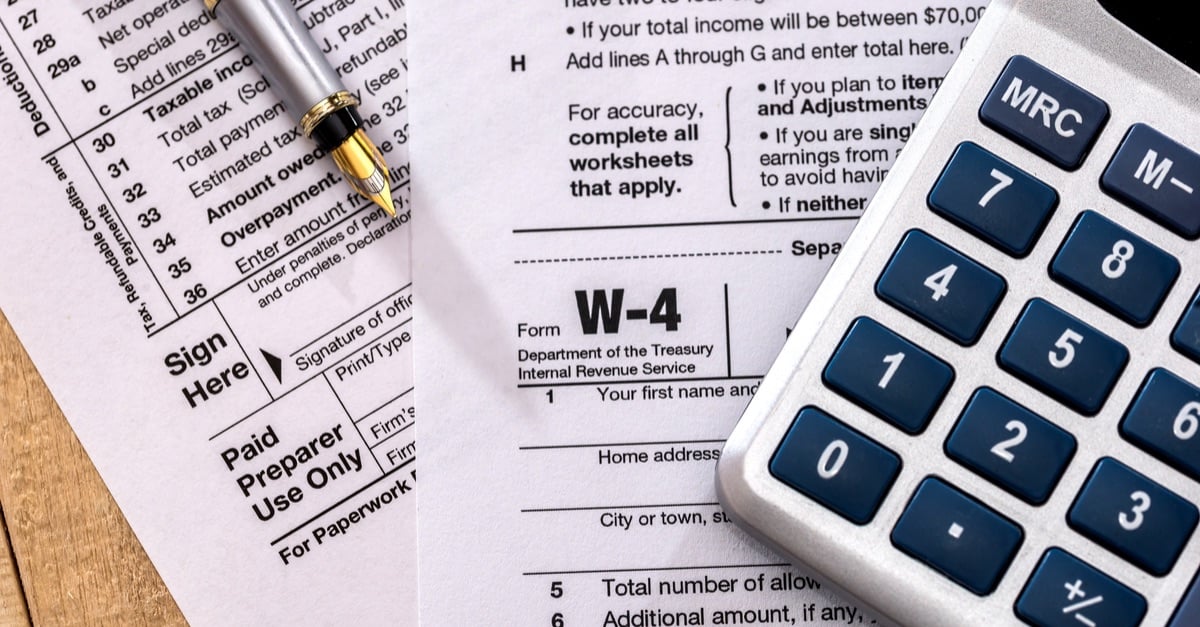Tax season and questions tend to go hand in hand. For one, how many of you have experienced an uptick in employees wondering why they didn’t have enough taxes withheld?
It’s a phenomenon companies experience every year after employees file their taxes and find out they owe more. Employees inevitably have questions. If it’s not about the why, they’ll certainly ask you how to avoid being underwithheld next tax season. They may even ask you to get a little creative, right? A quick system override. A handwritten edit on their old W-4. Anything to avoid owing taxes again.
But, as you know, all you can do is recommend that employees complete a new W-4, make sure the W-4 is valid, and reject any that are not. That said, there are ways you can help employees proactively avoid W-4 errors down the road, eliminate surprises, locate needed information and make the entire process a lot less painful.
1. Remind employees to review their W-4s regularly
A little reminder never hurts anyone, especially if it means your employees’ W-4s will be accurate. Let employees know that they should review their W-4 annually or, at a minimum, anytime they have an event that could impact their tax liabilities, such as:
- Marriage or divorce
- The birth or adoption of a child
- Buying a home
- A large raise or pay cut
2. Don't forget about state W-4s
Many states, such as Wisconsin, require taxpayers to submit both a federal and a state W-4 form. If you have employees in states that require both, make sure they are aware that a federal and a state W-4 are required. For an overview of state-by-state W-4 requirements, download our handy W-4 requirement chart.
3. Have employees make W-4 updates using the most recent form version
Employees are not required to update their W-4 each year simply because the IRS or state releases a new version. However, if an employee needs to make changes to their withholding, they should use the most recent version of the W-4 form, as it reflects the latest tax laws, adjustments and guidance to promote accurate withholding.
4. Leave the tax advice to the tax pros
Never give employees advice on what they should put on their W-4 form. Payroll professionals are not tax advisors and should be very careful about giving tax counsel. Instead, let employees know they should contact their certified public accountant (CPA), tax attorney or another qualified tax professional who has the expertise to provide personalized advice based on the employee’s individual financial situation and tax obligations.
That said, make sure you stay up to date on W-4 related news, so you can share other information that's not tax advice, but still beneficial to your employees. Check out our blog, "Essential Payroll Resources for Employers," for a robust list of reputable sources that will help you do just this.
5. Point employees to tax withholding calculators
As mentioned above, a qualified tax professional is always a good resource for your employees. That said, employees can also help themselves by using the IRS Tax Withholding Estimator, and if applicable, a state-provided calculator (Yes, Wisconsin has one). Using online tools like these, employees can estimate their income tax liabilities and reduce their risk of underpayment or overpayment of taxes. You’ll avoid the pressure of feeling like you need to answer employee withholding questions, while also giving employees an intuitive way to sort it out on their own. A win-win.
6. Educate employees about additional withholding
Encourage employees to specify additional withholding on their W-4 forms if they’re worried about being hit with unexpected tax liabilities. For federal withholding, employees can indicate extra withholding by entering an additional dollar amount on Step 4(c) of their federal W-4.

Similarly, many state W-4 forms provide options for additional withholding, although the process may vary by state. Employees should refer to their state-specific W-4 form instructions for guidance on indicating additional state withholdings.
7. Do not accept invalid W-4s
You’d be hard pressed to find any employee who actually gets excited about filling out a W-4 form. Often, it’s just another thing they have to do. As a result, they may be quick to take a few shortcuts and unintentionally invalidate their W-4. Make sure employees know what is and is not okay to do when filling out or updating a W-4 form — and then don’t make exceptions.
A W-4 is considered invalid when the employee:
- Alters or crosses out sections on the form
- Indicates a percentage amount on the form
- Writes “exempt” and checks the box on Step 2(c) or makes entries in Step 3 or 4
- Verbally states there is false information on the form
If an employee submits a W-4 with any of these violations, you should not accept it. Additionally, it is important not to make overrides in the payroll system to accommodate employees (yes, even if an executive-level employee is asking). Most payroll systems allow employers or the payroll technology provider to make W-4 entries using flat dollar or percentage amounts. As indicated in bullet two above, this will invalidate the W-4 and should not be done. Instead, employees can always use Step 4(c) on their federal W-4, or the state W-4 equivalent, to indicate additional withholding amounts.
8. Help employees protect their personal information
Storing employee data in a secure human capital management (HCM) solution and enforcing strong password practices are important steps toward protecting employees' personal W-4 data. However, it's also important to educate employees on how to protect their own data. Keep employees informed about popular scams and how to avoid them. Also, make it clear that neither you, nor the IRS, will request personal information via email or phone. Rather you'll use forms like the W-4 to collect such information.
9. Utilize electronic W-4s
If you aren’t already, you should be leveraging electronic W-4s through your payroll processing system provider. Employees don’t want to deal with cumbersome W-4 PDFs that are tough to update, save and submit (we’ve all been there). It’s far easier when an employee can simply log in to the payroll system, fill out an electronic W-4 using a guided widget, and ensure their W-4 is saved in the system for quick updates in the future. Plus, it’s easier for you too. You always have the most recent W-4 on file, and your payroll will be more accurate because employee W-4 information is in the system and will automatically inform employee withholdings on each and every payroll run.
Curious how B2E Solutions can simplify your W-4 processes? Contact us today to simplify your payroll processes.
Editor's Note: This blog was originally published on March 29, 2024, and is regularly updated to reflect the most up-to-date, accurate information.










